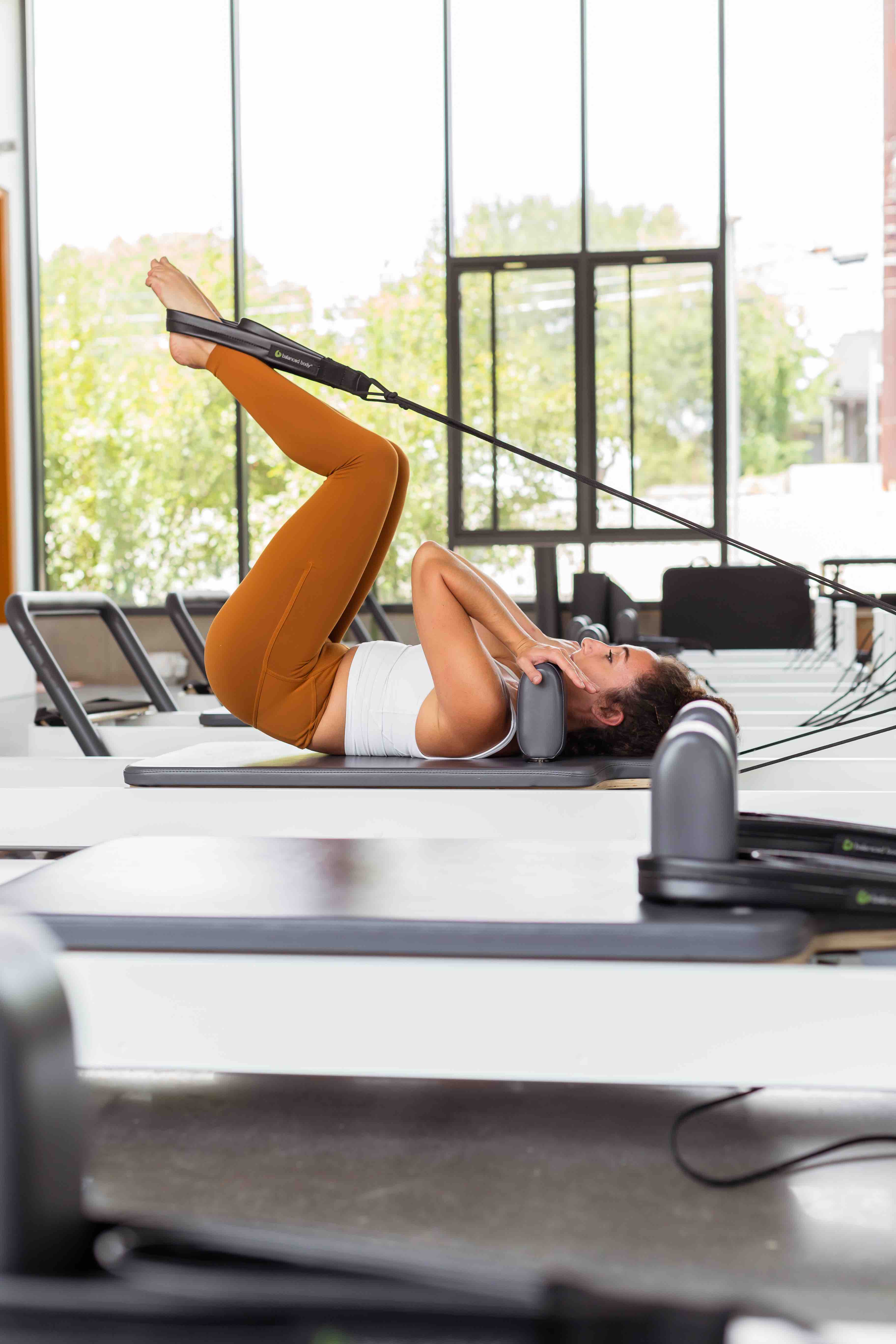Pilates Body Hack: Pilates for Happy Hips
One of the first things I notice as a Pilates instructor when one of my clients lays down on the reformer for their first exercise is the natural balance of their hips in relation to their legs, low back and deep core. Tight hip flexors, weak glutes, rotated and uneven hip crests, and a tendency to either knock their knees together or wing them apart are some of the most common body tendencies I see across the board when it comes to observing hips.
While some of these tendencies might be due to the bony anatomy of the person in front of me, much of the time a muscular imbalance is the main cause, which means the balancing work of Pilates, especially reformer Pilates, can do wonders to create happy hips!
This guide walks you through the overarching how behind the most common imbalances, what Pilates can do to help balance you out, and some of the best mobility exercises I recommend to make your hips as happy as possible.
Blog Guide
- Overarching how
- What does Pilates do for your hips?
- What’s the Hack: What are some of the best stretches for happy hips?
- Conclusion: Pilates Body Hack: Pilates for Healthy Hips
Overarching how
What imbalances in your body are associated with unhappy hips?
- Tight and Overactive Hip Flexors and Psoas: Sitting for long periods or lack of proper stretching can lead to tight hip flexor muscles and a tight psoas. This can cause discomfort and limited range of motion in the hips. It can also create a feeling of stiffness and a lack of range when you try to extend your hip or leg behind you.
- Weak Glutes: Weakness in the gluteal muscles can affect hip stability and lead to compensations during movement. I have found that most people have significant weakness and imbalance in their lateral glutes especially (their gluteus medius, minimus and tensor fascia lata).
- Tight and Imbalanced QL: The Quadratus Lumborum (QL) is a common pain point for many who struggle with low back pain. It can also indicate hip imbalance when one QL is tighter than the other, because it creates an upward pull of one hip crest in relation to the other.
- Tight or Weak Inner Thighs: Pelvic instability can also root from weak and tight inner thighs. If your inner thighs have a tendency to wing out, or collapse together, they might be tight, under active, or a combination of both things. Since your inner thighs play a key role in your inner core unit, engaging them properly is important in order to balance out your hips.
- Weak Deep Core Strength: If you have a weak deep core (again pointing back to that inner core unit), then you might have a tendency to tilt your pelvis forward, creating a sway in your low back. This not only puts unnecessary pressure on your low back, but also creates imbalance in the frontside and backside of your hips since your deep core is not doing its role to keep your pelvis level, back to front.
What muscles should you focus on mobilizing and stabilizing when your hips feel off?
The same pain points of hip imbalances can be mobilized and stabilized through a Pilates practice to achieve balance and more efficient functioning for happy hips!
- Hip Flexors and Psoas: You can restore balance to your hip flexors and psoas by focusing on the safe extension of your hips and spine. Lunging, bridging, and gentle backbends (supported by the glutes rather than dumping into the low back) are a few ways to do this.
- Posterior Chain Strengthening: Thinking about strengthening your glutes three dimensionally, as well as as a chain of movement will take you far in your journey to balance your hips. Your posterior chain starts at the tip of your skull and runs behind you towards your heel bones. Pilates teaches you how to optimize movement to find balance using your entire body. The three glutes that Pilates targets include your glute max, glute minimus, and glute medius.
- Hip Adductors: Your hip adductors help draw your legs together to stabilize your pelvis. They also play a role in stabilizing your pelvic floor. The four hip adductors are adductor longus, adductor brevis, adductor magnus, and gracillis.
- Core muscles: Deep core work is at the root of finding happy and healthy hips. It is also at the root of everything we do in Pilates!
What does Pilates do for your hips?
Pilates is an excellent form of exercise for promoting healthy hips because it focuses on fine tuning deep core strength, mobility, and stability to help create happy, balanced hips, three dimensionally.
What’s the Hack: What are some of the best stretches for happy hips?
The following mobility exercises can be done on their own, with a theraband, or if you’re fancy, a CoreFirst System and an anchor point.
Leg Circles
- Lie on your back with your legs extended straight up toward the ceiling.
- Keep your arms relaxed by your sides, palms facing down.
- Engage your core to stabilize your pelvis and prevent excessive movement.
- Lower one leg slightly toward the floor while maintaining control and avoiding arching your back.
- Begin circling your leg clockwise or counterclockwise in a smooth, controlled motion.
- Perform the circles for a set number of repetitions in one direction and then switch to the other direction.
- Repeat the exercise with the opposite leg.
Again, this mobility exercise can be supported with a theraband around the arch of your foot, as you do one leg circle at a time, or a CoreFirst system anchored to the door,
Figure Four
- Lie on your back with your knees bent and feet flat on the floor, hip-width apart.
- Cross your right ankle over your left knee, creating a “figure four” shape with your legs.
- Gently press your right knee away from your body to feel a stretch in your right hip and glute area.
- Hold the stretch for about 20-30 seconds, breathing deeply and relaxing into the stretch.
- Release the stretch and switch to the other side, crossing your left ankle over your right knee.
- Repeat the stretch on the opposite side.
Adductor Stretch
- Lay on your back with your legs extended out to the sides. Make sure you keep your rips and core connected to the floor.
- Feel the stretch in your inner thighs and groin area.
- Hold the stretch for about 20-30 seconds while breathing deeply.
- To concentrate the stretch in one inner thigh at a time, you can bend one knee in at a time, allowing the other leg to extend and stretch
- Slowly release the stretch and come back to the starting position.
To target the hip flexors, I recommend a different approach guided by trigger point therapy. To get into this muscle group, place a peanut massage ball about 1 inch inward from your hip crest and rest onto it.
Conclusion: Pilates Body Hack: Pilates for Healthy Hips
Pilates offers a comprehensive approach to promoting healthy, happy hips. By focusing on core strength, hip mobility, and overall body awareness, Pilates addresses our most common imbalances with breath and precision.
Some imbalances may require the expertise of a physical therapist or chiropractor. If you have ongoing aches and pain in your hips and low back, I recommend seeking out their guidance before resuming any specific movement routine.

Pilates for Aerialists: My Research on Deep Abdominal Engagement in Circus Artists
2024 has been an exciting and challenging year for so many reasons! One of these reasons points to the original EMG (electromyography) research I conducted on the effect of Pilates on deep abdominal recruitment in circus artists. After spending months recruiting aerialists from different corners of the UK, 8 professional and recreational aerialists and acrobats…
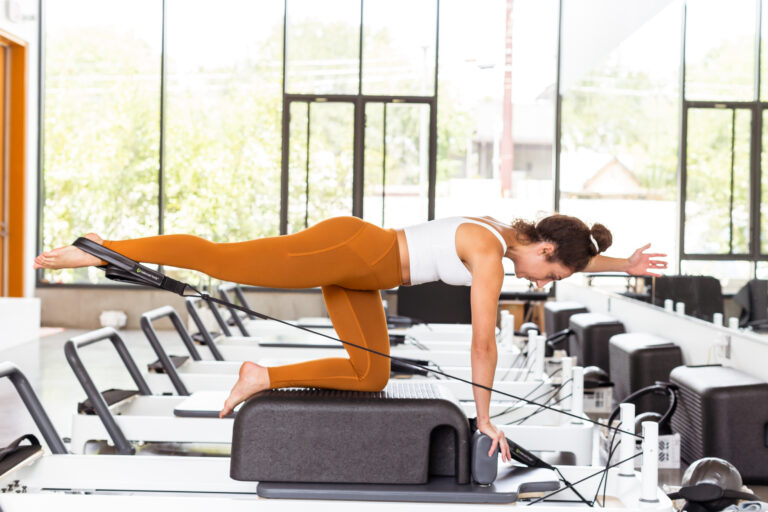
Pilates for Pelvic Floor Health
It is to my delight that talking about your pelvic floor health is becoming more popular in really any setting. Even though we can’t physically see our pelvic floors, it holds so much importance from functional strength, to urinary and fecal health, sexual health and more! Having a deeper and more connected understanding on the…
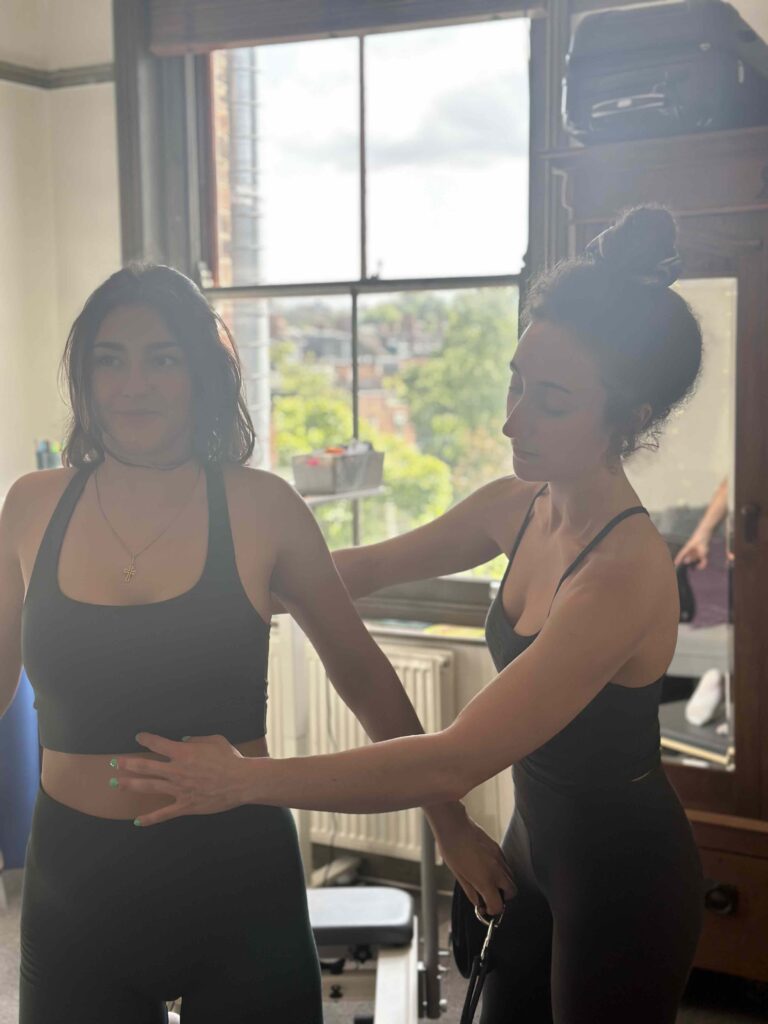
Pilates for Hypermobility
Hypermobility is a condition of the joints that affects more people than the majority of the population realizes. Several of my Pilates clients have been somewhat unaware of their hypermobility until I drew attention to it within our sessions and explained the range of motion that each joint is ideally designed to move through. If…
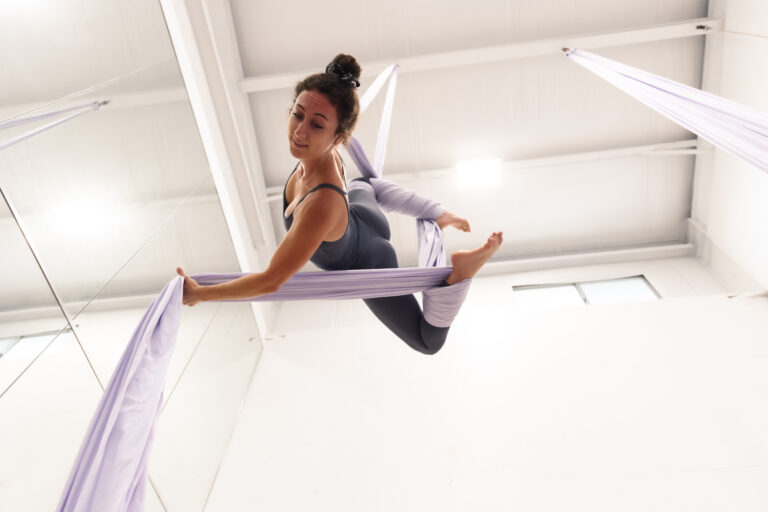
My Favorite Athletic Wear for Aerial Silks
Finding comfortable and supportive material to move in in the air can be a challenge! This blog takes you through my 5 favorite brands that I wear during my aerial silks practice. In addition to being popular, cute choices, these brands also support eco-friendly manufacturing practices, which I can get behind to support any day!…
Pilates Body Hack: Pilates for Low Back Pain
Low back pain is an extremely complex issue that many people experience at least once, if not several times in one lifetime. This blog speaks to my personal experience and thorough research of my own back injury (in short, a lumbar spine disc herniation), insight I’ve gained over the years as a Pilates instructor, and…
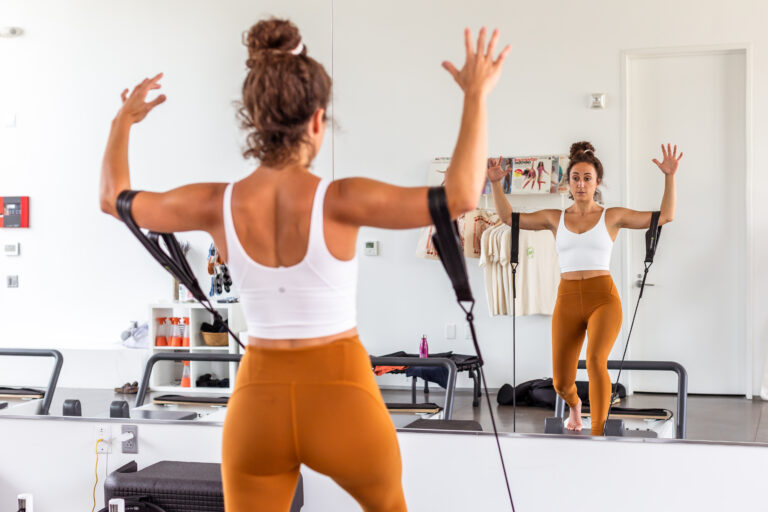
Pilates Body Hack: Pilates for Rounded Shoulders
Pilates works to restore balance and equilibrium in our bodies. Unfortunately daily life as a result of our digitally intensive work and social activities commonly brings about unwanted pain, stiffness, and imbalance. This Pilates body hack blog reveals the how behind rounded shoulders by reviewing what weak muscles cause this posture, what pain is commonly…
